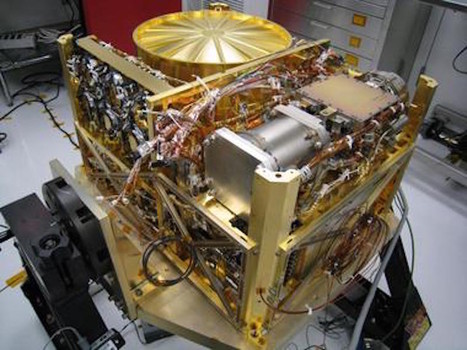Despite decades of searching, definitive evidence for life on Mars, past or present, has still remained elusive and controversial. Confirmation of such a finding would need to be thoroughly tested and documented, and now researchers at the University of Kansas have developed a new technique that they hope would help to do just that, should that evidence be found by future rovers or landers.
There is already ample evidence that Mars used to have conditions much more favorable for life than it does now, including massive amounts of water. Some of that water was salty and acidic, but in other areas it was more benign, like in fresh water lakes on Earth. Gale crater, where the Curiosity rover is now, is one such location.
“There has been a tremendous amount of very exciting findings this year that Mars once contained actively flowing, low-saline, near-neutral-pH water – pretty much the type of water where you find life on Earth today,” said Alison Olcott Marshall, assistant professor of geology at the University of Kansas. “This has made people think that it’s possible that life could have existed on Mars, although most researchers agree it’s unlikely to exist today – at least on the surface – as conditions on the surface of Mars are incredibly harsh.”
The new technique is designed to improve the way scientists detect condensed aromatic carbon, which is thought to be a chemical signature of life.
According to Craig Marshall, Alison Olcott Marshall’s husband and associate professor of geology at KU, “If we’re going to identify life on Mars, it will likely be the fossil remnants of the chemicals once synthesized by life, and we hope our research helps strengthen the ability to evaluate the evidence collected on Mars.”
Craig Marshall is also an expert on using Raman spectroscopy to look for carbonaceous materials. Alison Olcott Marshall is a paleontologist with expertise in how the record of life gets preserved on Earth, especially when there is no bone or shell or tooth or other hard part to fossilize.
One stumbling block is that Raman spectroscopy by itself can’t determine whether carbonaceous material has a biological origin or not (not all carbon is specifically linked to biological processes; it can occur abiotically as well).
“Raman spectroscopy works by impinging a laser on a sample so the molecules within that sample vibrate at diagnostic frequencies,” Craig Marshall said. “Measuring those frequencies allows the identification of inorganic and organic materials. It’s insufficient because however the carbonaceous material is made, it will be the same chemically and structurally, and thus Raman spectroscopy cannot determine the origin.”
To solve that problem, the Marshalls propose supplementing the Raman spectroscopy with gas chromatography/mass spectroscopy.
“Much like the search for ancient life on Earth, though, one strand of evidence is not, and should not be, conclusive,” said Alison Olcott Marshall. “This is a vast puzzle, and we want to make sure we are examining as many different pieces as we can.”
The new technique is currently being tested on Earth rocks which are similar in composition to their Martian counterparts. This could help future rovers or landers to search specifically for these kinds of compounds and analyze them with more precision than can be done now.
“If you were to pick up a typical rock on Mars it would look quite different, chemically, from a typical rock here on Earth, not to mention the fact that it would be covered in rusty dust,” Alison Olcott Marshall said. “Previous research into how Raman spectroscopy would fare on Mars was mainly done on pure salts and minerals, often ones synthesized in a lab. We identified field sites on the Kansas-Oklahoma border with a chemical content more like what could be found on Mars, right down to the rusty dust, and we’ve been exploring how Raman spectroscopy fares in such an environment.”
The new research seems to offer a promising method for a more fine-tuned search for evidence of ancient Martian life, one which could determine if any carbon found had a biological origin or not. The Curiosity rover has found trace amounts of carbon and other organics in its study of Martian rocks in Gale crater, which was also confirmed to have once been a lake, but it is limited in determining whether any of that carbon is the result of life itself or just other abiotic processes.
Just finding organics on the Martian surface is still a challenge, due to the harsh ultraviolet light as well as some other compounds in the rocks and soil such as perchlorates, which destroy them.
New techniques such as this one from the University of Kansas should help to better determine the source of any carbonaceous material found in future missions, and, perhaps, find a chemical “smoking gun” for past life on Mars.















